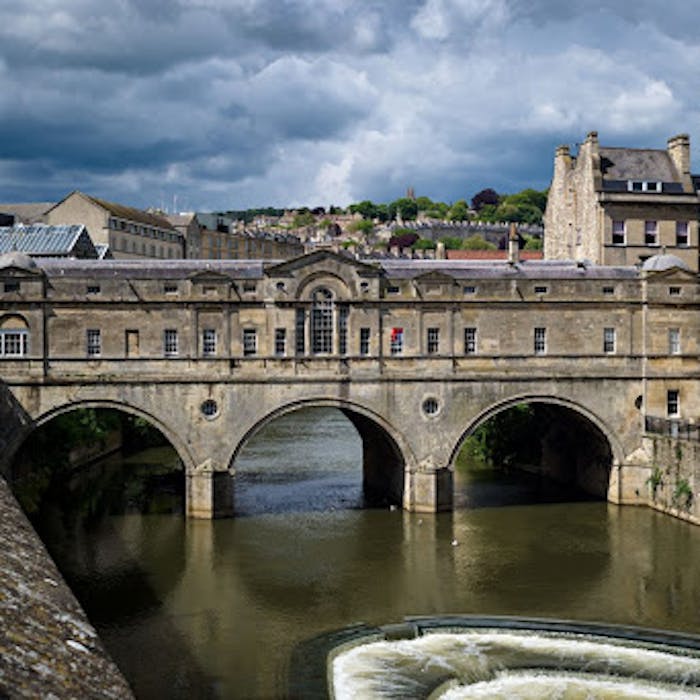
Pulteney Bridge - Bath's unique shop-lined river crossing
Pulteney Bridge crosses the River Avon in the city of Bath. Designed by neoclassicist architect Robert Adam in a Palladian style in 1774, it is exceptional in having shops built across its full span on both sides, one of only four bridges in the world with this characteristic. It has been designated as a Grade I listed building.
The bridge was built to connect Bath with the land of the Pulteney family, which they wished to develop. It is named after Frances Pulteney, the wife of MP and lawyer William Johnstone. The couple inherited the rural Bathwick estate in 1767, and it was only reachable by ferry. William made plans to create a new town, which would later become a suburb to Bath, but first a more adequate river crossing was required.
In 1770, architect Robert Adam was working on designs for the new Bathwick town, and he envisaged an elegant structure lined with shops to provide the link, similar to the Ponte Vecchio and the Ponte di Rialto in Florence and Venice. Construction started in 1770 and was completed by 1774. It was built of limestone, in classic Palladian style, and the southern facade takes the form of a temple-like central bay, which is supported by Doric pilasters. The focal point of the building is a large Palladian window. The roof is pitched and of Welsh slate. It is 45 metres long.
Pulteney Bridge stood for less than 20 years in the form Adam created, as in 1792 alterations were made. The bridge was widened from 15 to 18 metres, and the original sixteen shops were converted into six larger ones. When floods devastated the north side of the bridge, it was rebuilt by John Pinch (senior surveyor to the Pulteney estate), in a less ambitious version of Adam's design.
Nineteenth-century shopkeepers altered the structure and appearance of their premises by changing windows, or expanding them by adding cantilevers over the river. Some painted advertisements on the outside of their shops, affecting the view from the river and Bath's Grand Parade. The western end pavilion on the south side was demolished in 1903 for road widening.
The city council bought several shops and restored the original facade in time for the Festival of Britain celebrations in 1951. Further restoration took place in the 1960s to repair the underside of the three arches, and in 1975 with refurbishment of the southern street facade. In 1955, the bridge was designated a Grade I listed building.
In 2009 Bath and North East Somerset Council put forward a proposal to close the bridge to motor traffic and convert it to a pedestrianised zone, but the plan was abandoned.
Further reading
Links to external websites are not maintained by Bite Sized Britain. They are provided to give users access to additional information. Bite Sized Britain is not responsible for the content of these external websites.
